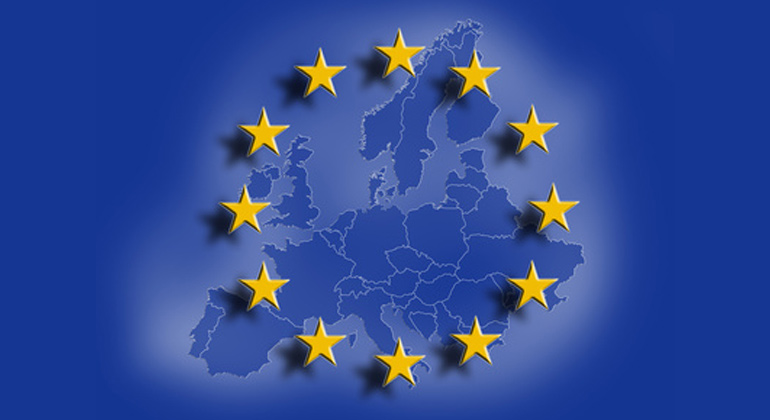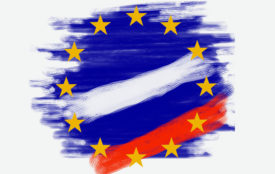The Energy Union on track to deliver
The first State of the Energy Union Report shows that much progress has already been made since the adoption of the Energy Union Framework Strategy 9 months ago. Still much remains to be done, and 2016 will be an important year of delivery
The Energy Union Framework Strategy (IP/15/4497) created a new momentum to bring about the transition to a low-carbon, secure and competitive economy. The Commission has also committed to report annually on the state of the Energy Union in order to address the key issues and steer the policy debate. The State of the Energy Union Report, published today for the first time, looks at progress made over the last nine months and identifies key action areas for 2016 and provides policy conclusions at Member State, regional and European level. This is a central element to monitor the implementation of this key priority of the Juncker Commission.
Maroš Šefčovič, the Vice-President responsible for the Energy Union, said: “Nine months down the road, we can say with confidence that we are on track to deliver the Energy Union. My messages for 2016 are clear. First, the EU should continue to lead in the transition to a low-carbon economy. Second, that transition should be socially fair and consumer-centred. And third, the geopolitical challenges that we faced this year will not go away. 2016 will also be the year in which we will lay the foundations of a robust governance system bringing predictability and transparency, which is what investors need. In sum: 2016 will be a year of delivery!”
Miguel Arias Cañete, Commissioner for Climate Action and Energy, said: “The Energy Union is starting to take shape. A lot of progress has been made in these few months but we should now move to full scale delivery of all actions needed. This will be my focus in 2016: presenting the legislation to make our electricity market work better, to further increase the share of renewables, to bring down our energy consumption and to ensure security of our gas supply. With this, the EU’s energy system will be stronger and all conditions will be set for the EU’s transition toward a low-carbon energy system. As all eyes turn towards negotiations in Paris, this a renewed pledge for European leadership and our commitment to the international efforts to fight climate change.”
On climate change, the State of the Energy Union highlights Europe’s contribution to the Paris negotiations. At this stage, more than 160 countries representing more than 90% of global emissions have presented their contributions to the Paris Agreement. The EU submitted in this process a binding domestic economy-wide emissions reduction target of at least 40% by 2030 compared to 1990 levels. After the Paris conference, it will be important that all countries follow up with concrete implementation of their commitments.
For the transition to be successful and socially fair, citizens will have to take ownership of this process by actively participating in the energy market, as they are the ones who ultimately should benefit from it. At the same time, there is a strong business case for this transition. Leading European companies are changing their business models. Renewable energies and energy efficiency are creating local jobs in Europe, requiring new skills.
Geopolitical events have kept energy high on the agenda. 2015 has been characterised by the ongoing tensions between Russia and Ukraine; persistently low oil prices impacting energy markets all over the world; the announcement of new commercial initiatives for additional supply infrastructure for natural gas from Russia; new perspectives opened up by the nuclear agreement with Iran, as well as a continued decline in the domestic fossil fuel production.
In addition to decarbonisation (including renewable energy) and energy security, the Energy Union strategy continues to deliver on energy efficiency, the internal energy market, and research, innovation and competitiveness, as all of these priorities are intrinsically linked.
The State of the Energy Union also presents key building blocks for a governance mechanism leading to more predictable, transparent and stable policies, in order to deliver on the objectives of the Energy Union. The guidance on integrated national energy and climate plans published today provides the basis for Member States to start developing their plans for the period from 2021 to 2030. The tabled methodology on key indicators is the first step towards measuring and monitoring the delivery of the Energy Union. The State of the Energy Union is also accompanied by 28 factsheets providing an assessment of delivering the Energy Union for each Member State.
What else has been adopted today
Several Energy Union deliverables and reports are adopted and published alongside the State of the Energy Union:
- The 2nd list of Projects of Common Interest sets out the infrastructure projects which are urgently needed to meet our energy policy targets and objectives. For more details see the separate press release (IP/15/6107).
- Energy efficiency progress report: The report on progress in implementing the 2020 energy efficiency target of 20% by 2020 shows that despite significant progress made, collective efforts of Member States correspond to only 17.6% primary energy savings, compared to projections for 2020. However, the Commission remains optimistic that the 20% target will be achieved, provided that existing EU legislation is fully implemented, efforts are accelerated, ambition level increased and the investment conditions improved.
- Climate action progress report: The report shows that the EU has been particularly successful in decoupling economic growth and greenhouse gas emissions. The EU is also on track to meet both the 2020 emissions reduction target of 20%, as well as the Kyoto Protocol targets. However, further measures are needed to meet the 2030 target.
- Energy Consumer Trends: The Staff Working Document illustrates that electricity and gas markets are still not performing as they should despite progress made.
- Report on the implementation of the EU Energy Security Strategy: This report provides an update on where the European Union stands with regard to energy security and which measures have been taken to improve it since the adoption of the Strategy in May 2014.
- Report on the implementation of the Nuclear Safety Directive: The report concludes that there is, in general, a good level of compliance with the 2009 Nuclear Safety Directive.
- Oil Stocks Summary: The Oil Stocks Directive requires the Commission to report regularly on the available oil stocks in the Member States. The Staff Working Document delivers on this obligation and provides an update on the oil stocked in the EU.
- A proposal for a regulation on electricity and natural gas price statistics which will – once adopted – improve European statistics on energy prices.
- The Commission is also launching today its public consultation on the future revision of the renewable energy directive, which will run until 10 February.
More information
- The State of the Energy Union Communication and 28 Member States factsheets can be found on the Commission’s website: http://ec.europa.eu/priorities/energy-union/state-energy-union/index_en.htm
- One year on: Energy Union and Climate change Policy: http://ec.europa.eu/priorities/energy-union/docs/energy-union-1-year_en.pdf
- Fact sheet on State of the Energy Union: MEMO/15/6106








